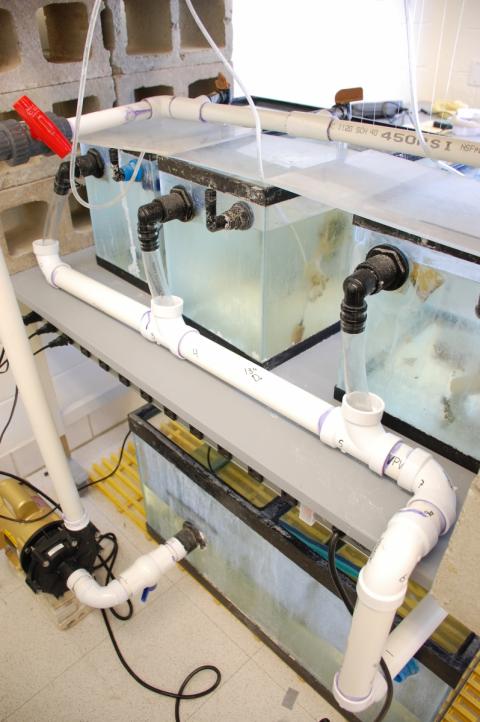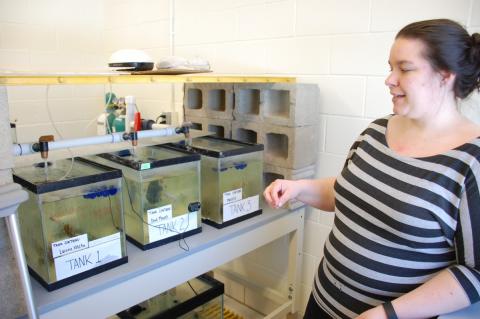Student research focuses on ocean acidification
Tucked away in an empty room of Spaulding Hall’s ground floor is a small makeshift lab that houses a set of fish tanks with water recirculating through them. There are no fish in the tanks, though — just some kelp, mussels, sea snails and a whole lot of carbon dioxide being pumped into the water. The carbon dioxide is used to decrease the pH of the seawater in the tanks, first from the slightly basic natural seawater level (around 8.2, though there is some variation around that average) down to 7.4 for a week, then even lower to 6.4.

The recirculating system designed to test the effects of ocean acidification on mussels and sea snails.
Jennifer Halstead, a graduate of Great Bay Community College and currently a junior at UNH majoring in marine biology, keeps meticulous records of the water’s temperature and pH in the tanks, recording the data every 15 minutes throughout each day. She is working with three other UNH undergraduates to study the impacts of ocean acidification on organisms like the mussels and snails — focusing specifically on the organisms’ growth, behaviors and shell thickness. One of the team members is looking into the possibility of measuring the mussels' bissel thread strength to determine impacts from acidification as well.

Jennifer Halstead (UNH '17) discusses her team's ocean acidification research for the UNH Ocean Projects Course.
The research is part of the UNH Ocean Projects Course, a two-semester design class offered to juniors and seniors who want to conduct hands-on research in the ocean engineering or marine biology fields. NHSG provides partial funding for the course, providing students with the opportunity to purchase supplies to create technology that addresses real-world challenges relating to the marine environment.
The ocean acidification team, along with other teams from the Ocean Projects course, will get the chance to discuss their research at the upcoming UNH Undergraduate Research Conference as well as at the course's final presentation in front of a jury of marine professionals in early May.